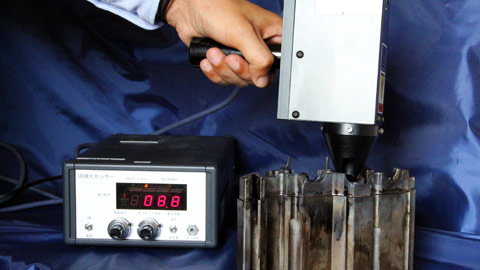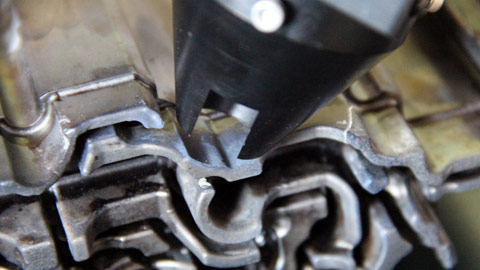A large amount spray to a small spray amount
Lubrolene developed Water Free Releasing Agent "WFR series" in 2004.
WFR series can effectively adhere with a small spray amount by suppressing the influence of Leidenfrost phenomenon compared with water based lubricant even over 300°C (572°F) die temperature.
However, WFR is applied very small amount, therefore "Determining the presence or absence of die lubricant adhesion" is the problem. So, we focused to add a fluorescent agent to WFR for visualization with black light (UV light). All items of WFR series is, you can check the spray point by irradiation with UV light.
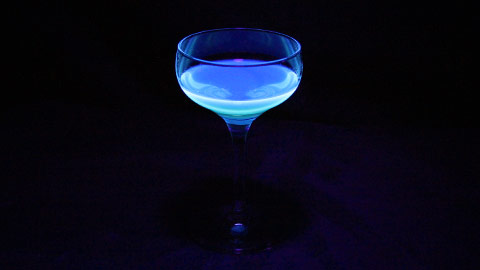
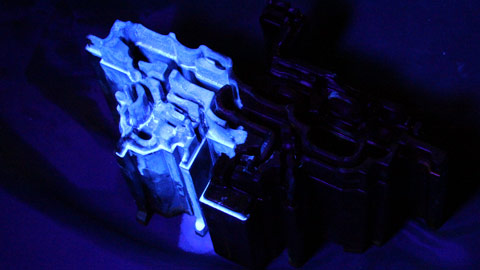
Measurements of die lubricant film thickness due to high adhesion efficiency of WFR
WFR series are less flying-loss due to small spray amount, and also can effectively adhere by suppressing the influence of Leidenfrost phenomenon, therefore, spray amount can be reduced from 1/300 to 1/1000 less than water based die lubricants under various die temperature.
"WFR series" form much thicker film. Thus, we achieved the measurement of film thickness with a laser microscope.
Measurement of film thickness expand the width of the study, we could collect more data closer to a real die casting machine with conjunction with the friction tester. , has enabled more data collection.
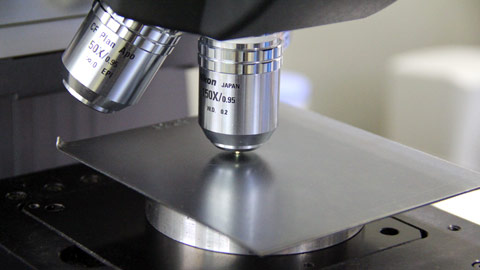
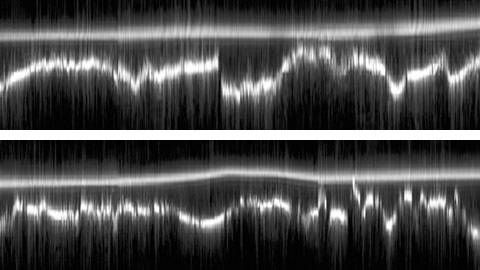
We could measure film thickness on the actual machine due to WFR responds to UV light
We want to measure the actual machine if we can measure in the lab.
Two unique features of "WFR series"
1. You can check the spray point by irradiation with UV light.
2. Possible film thickness measurement in our lab with a laser microscope.
We achieved the measurement of film thickness on actual dies by combining a fluorescence intensity measurement meter.
However, we can not measure over 230°C die temperature due to the limitation of fluorescent heat resistance.
We believe that we will be able to measure film thickness under all temperature range in the near future. Our research and exploration activity continues last forever.
